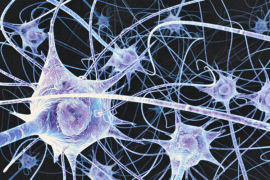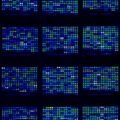
Scientists have created the first cell controlled by a synthetic genome, a feat that will allow researchers to probe the basic machinery of life and to engineer custom-designed bacteria. Study leader Craig Venter, of the J. Craig Venter Institute, has published details of the work in the journal Science.
Venter’s research team had already chemically synthesized a bacterial genome, and it has transplanted the genome of one bacterium to another. Now, the scientists have put both methods together, to create what they call a “synthetic cell.”
“This is the first synthetic cell that’s been made, and we call it synthetic because the cell is totally derived from a synthetic chromosome, made with four bottles of chemicals on a chemical synthesizer, starting with information in a computer,” said Venter. “This becomes a very powerful tool for trying to design what we want biology to do. We have a wide range of applications in mind.”
In the study, the researchers synthesized the genome of the bacterium M. mycoides and added DNA sequences that “watermark” the genome to distinguish it from a natural one. Because current machines can only assemble relatively short strings of DNA letters at a time, the researchers inserted the shorter sequences into yeast, whose DNA-repair enzymes linked the strings together. They then transferred the medium-sized strings into E. coli and back into yeast. After three rounds of assembly, the researchers had produced a genome over a million base pairs long.
Acknowledging the ethical discussion about synthetic biology research, Venter explained that his team asked for a bioethical review in the late 1990s and has participated in variety of discussions on the topic. “This is an important step we think, both scientifically and philosophically. It’s certainly changed my views of the definitions of life and how life works,” Venter said.
In the future, the researchers are planning to design algae that can capture carbon dioxide and make new hydrocarbons that could go into refineries. They are also working on ways to speed up vaccine production. Making new chemicals or food ingredients and cleaning up water are other possible benefits, according to Venter.
Related:
Knocking on the door of life: self-replicating RNA synthesized
Scientists create tiny RNA molecule with big implications











Comments are closed.